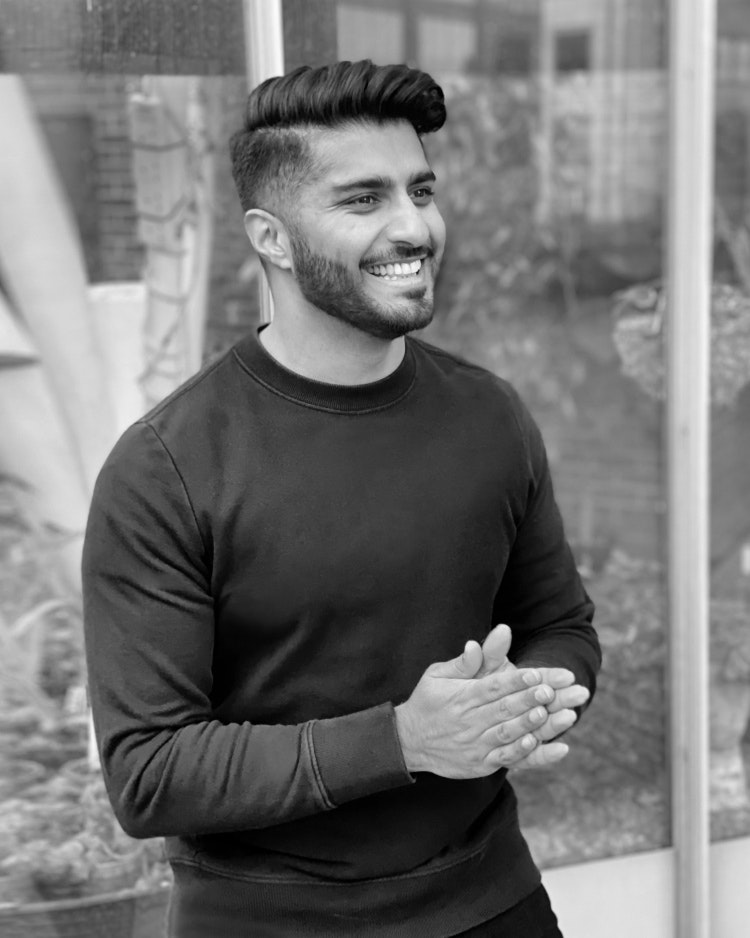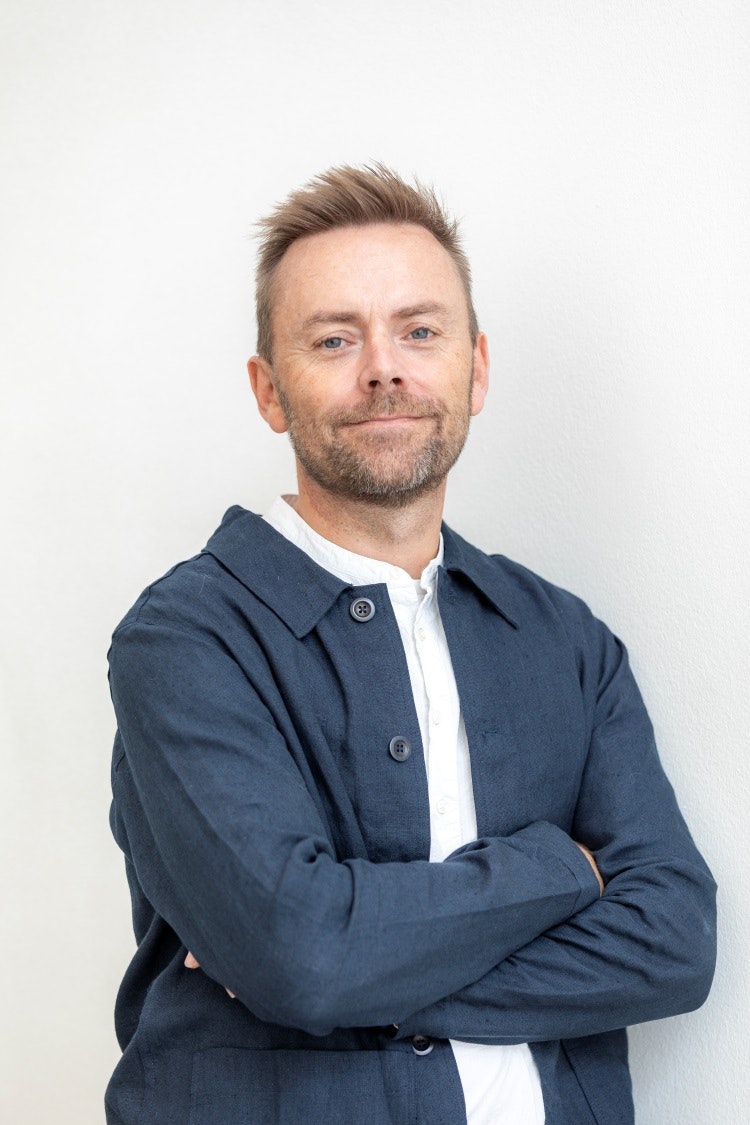DesignStudio executive creative director Vinay Mistry

“It seems obvious to me that we need to be engaging with young people, teachers and mentors much further upstream; sharing the rich and exciting opportunities the industry offers well before they start making decisions about further education or training.
The industry also needs to be much more transparent about the range of opportunities available. Too often all you see is the highlights, the polished showreels, the finished work for big brands. Instead we can help people understand just how many different options the creative industries offer – from specialisms like motion, illustration and typography, to emerging roles like AI production – by showcasing the full process and the range of experts that contribute to different projects.
For too long, the industry has attracted new talent from the same graduate talent pool, which comes with its own barriers for many people. In order to become more accessible across the board, we need to diversify the types of people we look for and change our expectations about the experience they may come to us with. For us, we want to free people of the expectation that they need to come with the right answers and instead help teach them the art of ‘unlearning’ to ask the right questions and provoke new ways of thinking.”
Designhouse chief executive officer Lavinia Culverhouse

“With sons currently at and heading to university, I feel well placed to comment on this having seen the issues first hand.
I agree the only way we can change the perception of a career in the creative industries has to start at school. The Heads of the Art & Creative department, and definitely the careers departments, don’t appear to understand the jobs on offer, even just the basics, like the difference between PR, advertising, film, digital and branding, let alone the opportunities on offer.
Another underlying issue is that creative children are immediately perceived as less intelligent. There is not enough shared understanding that just because you are not strong in STEM, it does not mean you are unintelligent. Equally, the perceived intelligent children are steered away, often by non-creative parents, from the arts.
Clearly a good starting point would be for the schools to invest in educating their careers departments. Given the creative industries contribute hugely to the UK economy, why don’t the government invest in communications and campaigns to educate the wider public as to what’s on offer and how proud we should be as a nation of our world class creative industries. We would be delighted to work with them on such an initiative!”
Studio Lutalica founder Cecilia Righini

“More needs to be done to bridge the gap between work and study. I often find that graduates aren’t ‘industry-ready’ after completing design degrees and, while it would be easy to blame the Higher Education system, I believe the industry step in earlier in the process by offering workshops, lectures and (paid!) internships to demystify creative work. For example, last year I mentored a Design student through a UAL programme, helping them understand the opportunities available and how to secure them.
Most importantly, there needs to be a shift in the way the creative industries recruit junior designers. We know that people from marginalised communities are less likely to apply for jobs for which they don’t meet all the criteria. To make design careers more accessible, hiring managers should stop asking for CVs (it isn’t relevant where candidates acquired their skills, as long as they can demonstrate their thought process) and be specific about what the role involves, so applicants can make an informed assessment. Asking for two years of experience for entry-level positions just isn’t fair.
The industry needs to shift to a development model of employment, which looks at an applicant’s potential and offers learning opportunities to support growth. As well as benefits like training or insurance, the industry should take advantage of the fact that much of our work can be done flexibly and remotely. Furthermore, people who are now entering the workforce were born and raised with internet and potentially got their degree online in the middle of a pandemic: we should not force them to work in an office on a 9-to-5 schedule, but we should give them the opportunity to create a working life that works for them.”
Foster + Partners head of industrial design Mike Holland

“Universities and agencies need to work in much closer partnership to ensure that students not only acquire the necessary skill sets to successfully pursue a career in design, but they also have a clear understanding of the reality of working in the industry. Having the connections and the wherewithal to make them is essential to forging a design career – closer ties between universities and industry are imperative in achieving this. Maintaining partnerships with universities, collaborating with student on longer projects and inviting them to the workplace to get first-hand insights into the industry can also help on this issue.
However, there is a larger problem at play – there are far fewer design companies and agencies operating today than in the past – since I graduated in 1993, the numbers have plummeted. This scarcity of opportunity is very real, compounding the challenge of securing roles in the field. I recently met with my own tutor and external examiner and we discussed the potential to establish an intermediary organisation that can effectively bridge the gap between industry and emerging talent. Such an initiative could significantly benefit students and the design industry as a whole by facilitating connections, fostering collaboration, and cultivating opportunities for aspiring designers.
Taxi Studio designer and culture ambassador Liv Beresford-Evans

“Let’s first unpack accessibility which can be construed into two camps. A lack of information and limited opportunities. Many agencies, like ourselves, maintain strong partnerships with key universities across the industry because we all share the goal of connecting with talented, traditionally educated creative individuals.
As a creative sector we don’t engage with secondary education who lack understanding of the myriad of opportunities across the creative industry. We must take the initiative to educate young people about the diverse aspects of creative businesses, from design and client relations to strategy and administration. You don’t have to be the next Picasso.
Accessibility is a challenge for many as their influence groups are unaware of the creative career pathways, especially for those who cannot access traditional education. Initiatives like weekend studio experiences and supporting social enterprise organisations can emphasise the value of empowering and upskilling a more diverse talent pool, fostering and enriching our industry with fresh perspectives.
Together, we can share insights and learnings whilst opening doors to broader, more diverse audiences to broaden our collective creative thinking.”
Pearlfisher creative director Jess Phillips

“Promoting awareness of the diverse roles in the creative industry is essential. While the industry has made strides in recent years to create platforms for self-taught creatives entering from outside traditional university education, I believe we should engage with students from a younger age.
Creative agencies, brands, and businesses should do more to connect with secondary schools, inspiring and introducing young minds to opportunities in the creative world. People should be taught from an early age that creativity does not solely stem from traditionally taught creative subjects, such as fine art, and that success is not limited to more academically focused subjects. Both paths can encompass a wide range of careers.
By reaching out to students before they enter college or university, we can dispel the myth that creativity is restricted to artistic talent. This proactive approach broadens perspectives and encourages young minds to explore their passions and discover their unique creative interests.”
The Yard Creative chief executive officer Tom Edington

“We need to change the narrative around this and ensure young people going through education (or not) understand there is a pathway into the creative industry. This starts much before 18, appreciating that not every kid learns in the same way, and embracing different approaches to education. The creative sector thrives and embraces people thinking differently, approaching a task in a different way and being able to get to a solution that is remarkable.
I firmly believe AI can not replace (it can enhance) a human’s instinctive and sometimes irrational thought, and that lateral thinking is what will always set humans aside from the learnt skill.
As an industry I feel we can be more involved from territory learning, educating schools and colleagues in our sector and encouraging the talent of tomorrow that there is a pathway into the creative sector.”
Banner image credit: Gorodenkoff on Shutterstock
Featured image credit: Rawpixel.com on Shutterstock
- Design disciplines in this article












One response to “How can the industry make design careers seem more accessible?”
Thanks for this article which was encouraging. I’m currently visiting universities with my youngest daughter looking at design courses which all vary enormously in terms of entry requirements. It’s not as straightforward as it was for my older daughter where entry was just based on grades. I wonder if the industry or universities need to offer more help with putting together a university portfolio? Advice on uni websites tends to be quite generic (what do you do for instance if sketching and drawing has not been a major part of your 3-D Design A-Level?) Different institutions have different asks. On top of Open Day visits, studying for A Levels, completing coursework and writing a personal statement it’s a bit of a challenge producing a portfolio which probably puts off many from applying for design courses. And, I speak as someone who comes from a family of graphic designers.